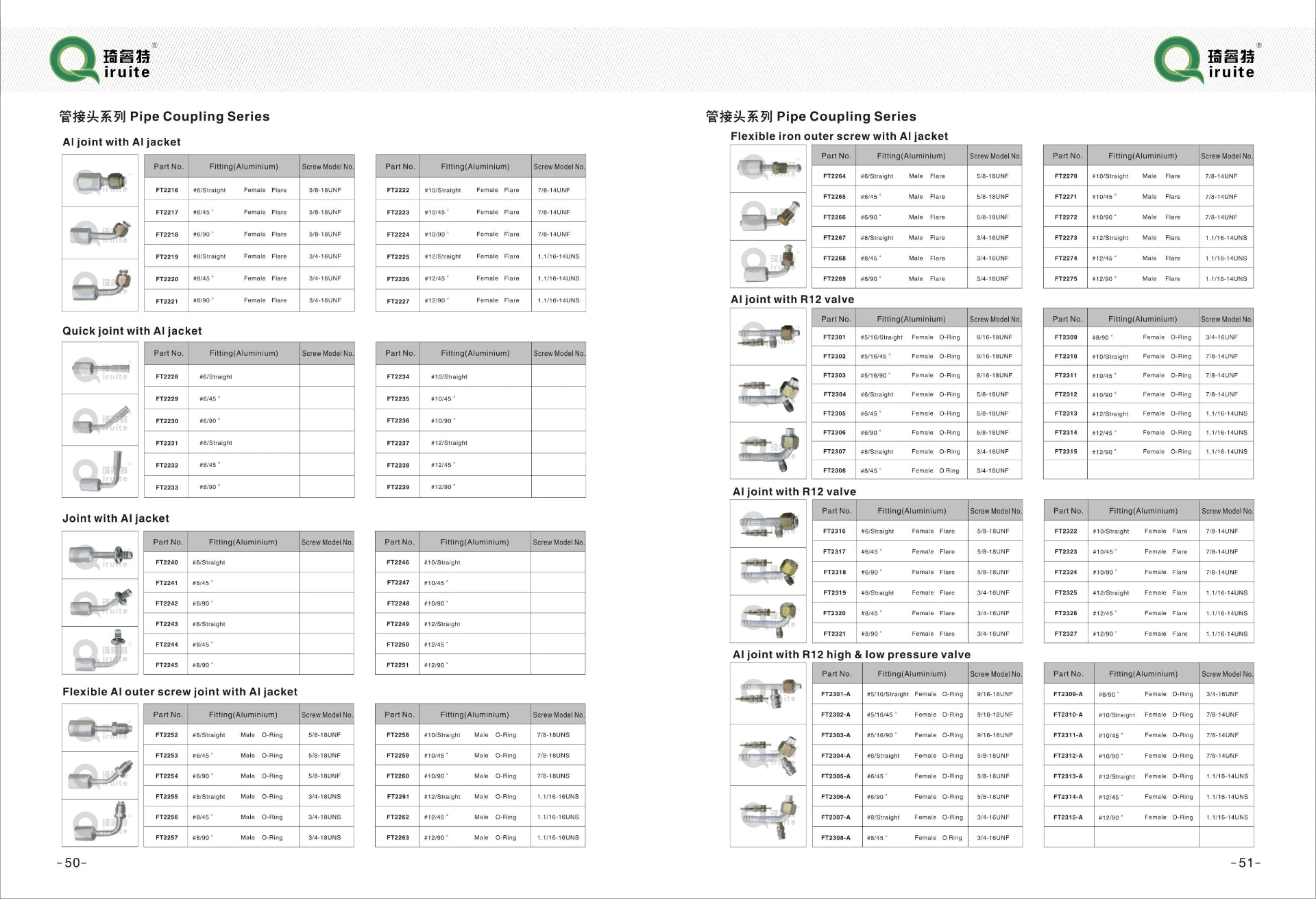jeep jk power steering hose replacement
Replacing the Power Steering Hose on Your Jeep JK
The Jeep JK, produced between 2007 and 2018, has become a favorite among off-road enthusiasts and daily drivers alike. One of the critical components in maintaining your Jeep’s performance is the power steering system, which ensures easy maneuverability both on and off the road. Over time, the power steering hose can wear out, leading to leaks and reduced steering efficiency. If you're noticing fluid leaks or a stiff steering wheel, it might be time to replace your power steering hose. Here’s a step-by-step guide on how to do just that.
Tools and Materials Needed
Before you get started, gather the following tools and materials
1. Replacement power steering hose 2. Wrenches (metric and SAE) 3. Socket set 4. Pliers 5. Screwdriver 6. Power steering fluid 7. Catch pan 8. Shop rags 9. Safety goggles and gloves
Step 1 Prepare Your Vehicle
Start by parking your Jeep JK on a flat surface and ensuring the engine is cool. Engage the parking brake for safety. It’s advisable to disconnect the negative terminal of the battery to prevent any electrical short circuits while working on the vehicle.
Step 2 Locate the Power Steering Hose
The power steering system is usually located near the front of the engine bay. The power steering hoses consist of a high-pressure hose and a return hose. Familiarize yourself with the layout of the hoses. The high-pressure hose runs from the power steering pump to the steering gear, while the return line returns the fluid back to the pump.
Step 3 Drain the Power Steering Fluid
Before removing the hose, it’s crucial to drain the power steering fluid to avoid any mess. Place a catch pan under the steering pump and disconnect the return hose. You can do this by loosening the hose clamp and carefully pulling the hose off. Allow the fluid to fully drain into the pan, and dispose of it properly.
Step 4 Remove the Old Power Steering Hose
Using the appropriate wrenches, carefully disconnect the high-pressure hose from both the power steering pump and the steering gear. Keep a rag handy to catch any remaining fluid that may leak out during the process. Take note of how the hoses are routed, as this will help you when installing the new hose.
jeep jk power steering hose replacement

Step 5 Install the New Power Steering Hose
Take your new power steering hose and position it in the same way the old one was routed. Begin by connecting the high-pressure end to the power steering pump, ensuring that it’s snug but not overtightened—excessive force can damage the fittings. Next, attach the other end to the steering gear in the same manner.
Step 6 Reconnect the Return Hose
Now, reconnect the return hose to the pump. Make sure all clamps and fittings are securely tightened to avoid leaks. Double-check all connections to ensure everything is tightened to the manufacturer's specifications.
Step 7 Refill Power Steering Fluid
With the hoses installed, it’s time to refill the power steering fluid. Using a funnel, pour the appropriate type of power steering fluid into the reservoir. Check your owner’s manual for specifications on the type and amount of fluid required.
Step 8 Bleed the Power Steering System
To remove any air trapped in the system, start the engine and turn the steering wheel from lock to lock several times. This process helps expel any air bubbles and ensures the system is primed properly. Keep an eye on the fluid level and add more fluid as necessary during this process.
Step 9 Check for Leaks
Turn off the engine and visually inspect the hoses and connections to ensure there are no leaks. If everything looks good, reconnect the negative battery terminal.
Conclusion
Replacing the power steering hose on your Jeep JK is a manageable task that can greatly improve the performance of your vehicle. Proper maintenance of the power steering system is crucial for safety and drivability. If you follow these steps carefully and take your time, you'll be back on the road enjoying your Jeep in no time. Always consult your owner’s manual for specific guidance and specifications for your Jeep model, and don't hesitate to reach out to a professional if you feel uncertain at any step of the process. Happy driving!
-
Ultimate Spiral Protection for Hoses & CablesNewsJun.26,2025
-
The Ultimate Quick-Connect Solutions for Every NeedNewsJun.26,2025
-
SAE J1401 Brake Hose: Reliable Choice for Safe BrakingNewsJun.26,2025
-
Reliable J2064 A/C Hoses for Real-World Cooling NeedsNewsJun.26,2025
-
Heavy-Duty Sewer Jetting Hoses Built to LastNewsJun.26,2025
-
Fix Power Steering Tube Leaks Fast – Durable & Affordable SolutionNewsJun.26,2025

